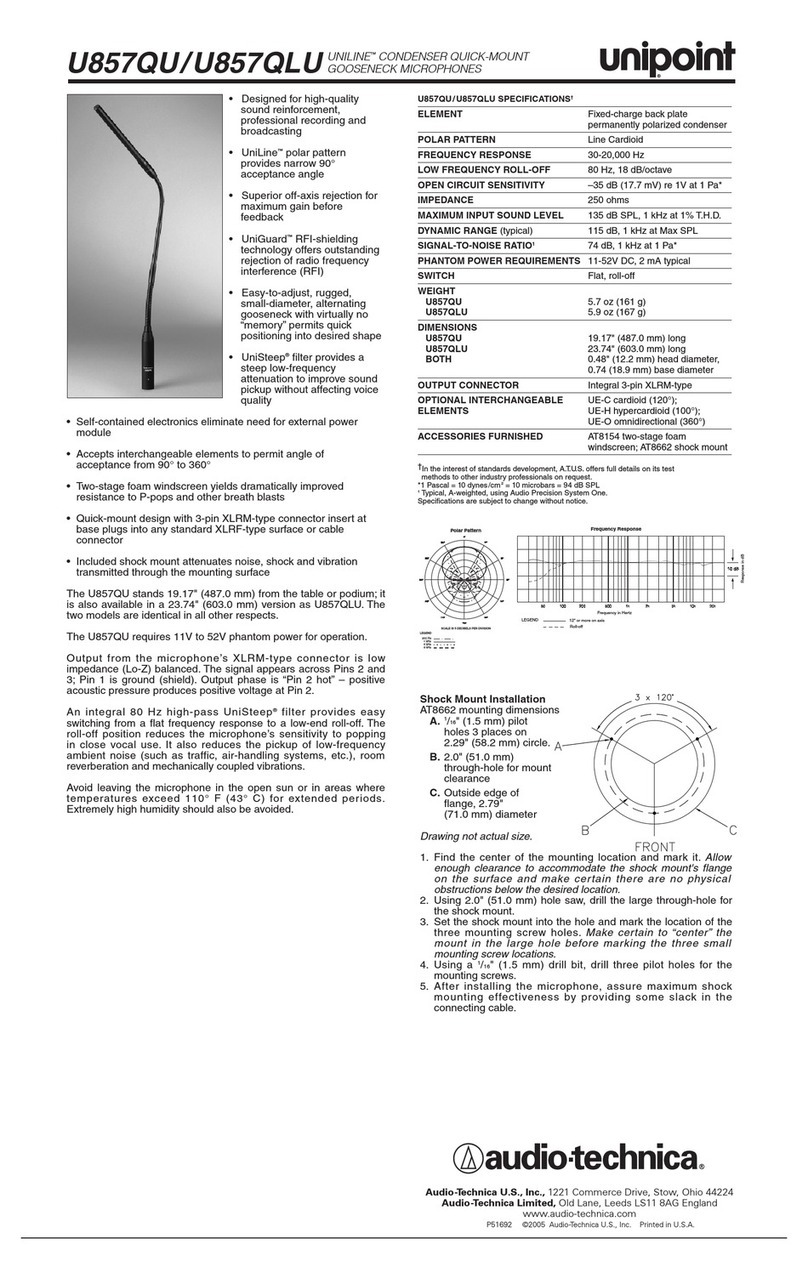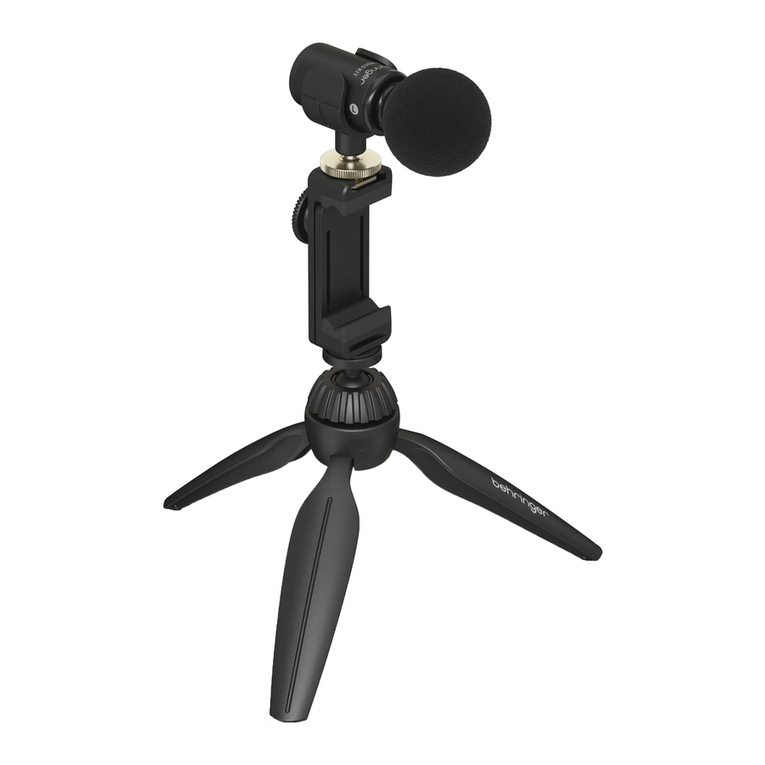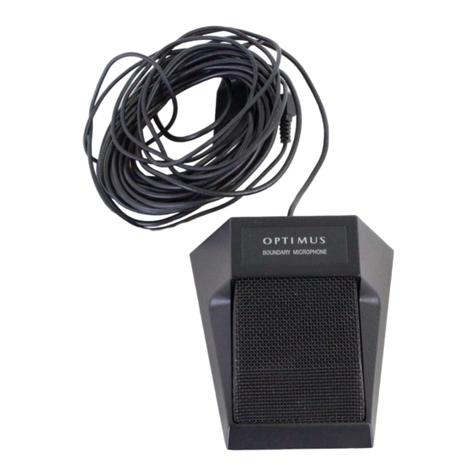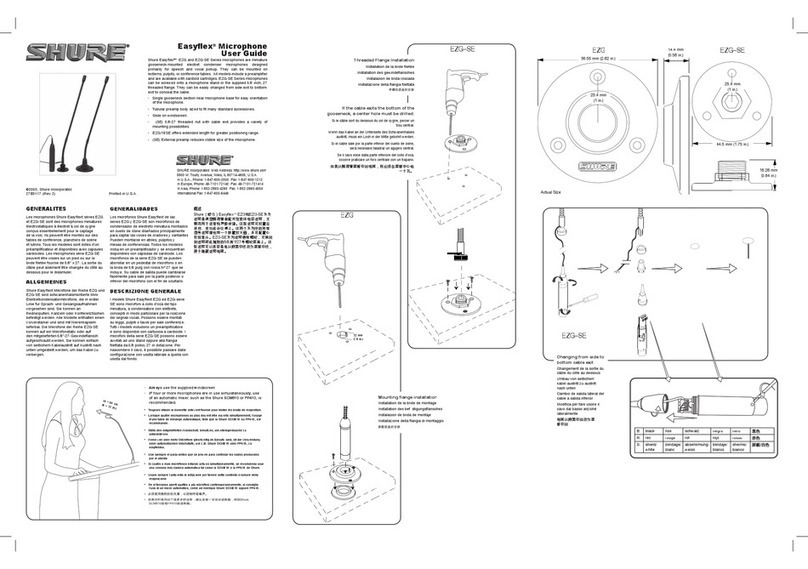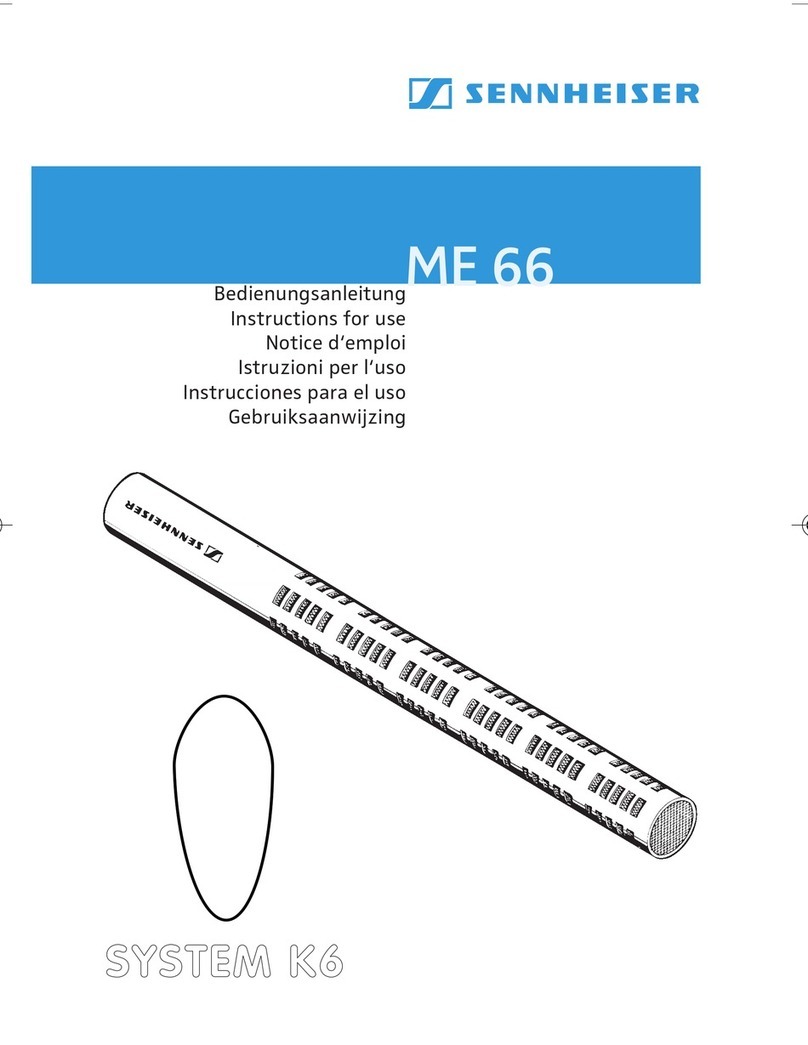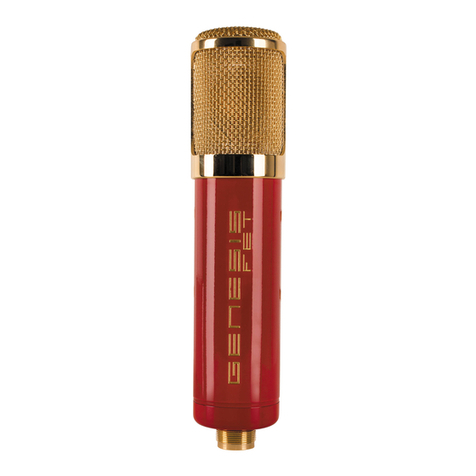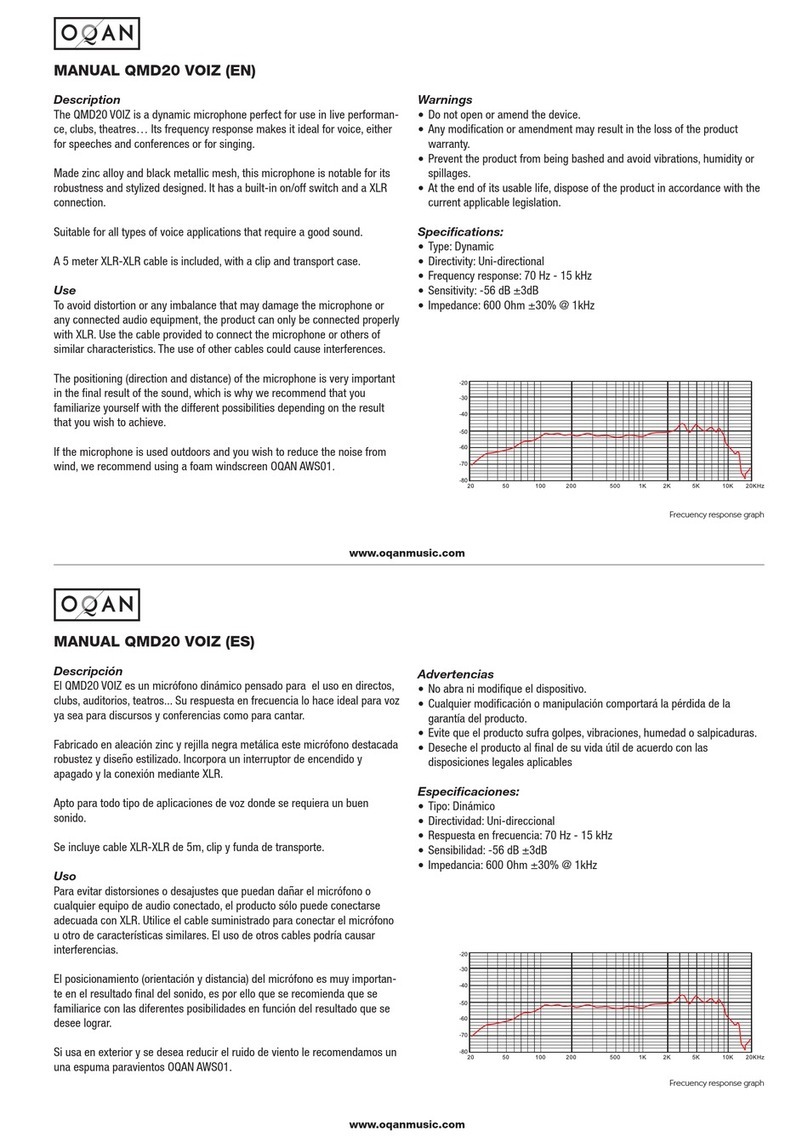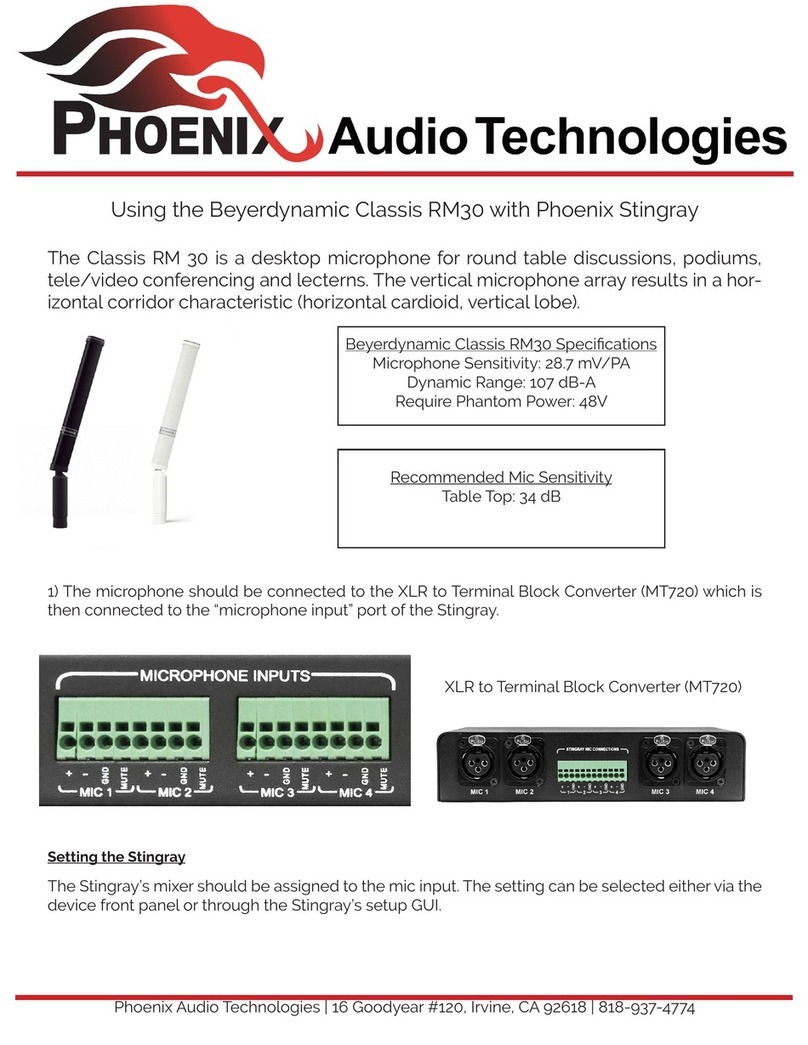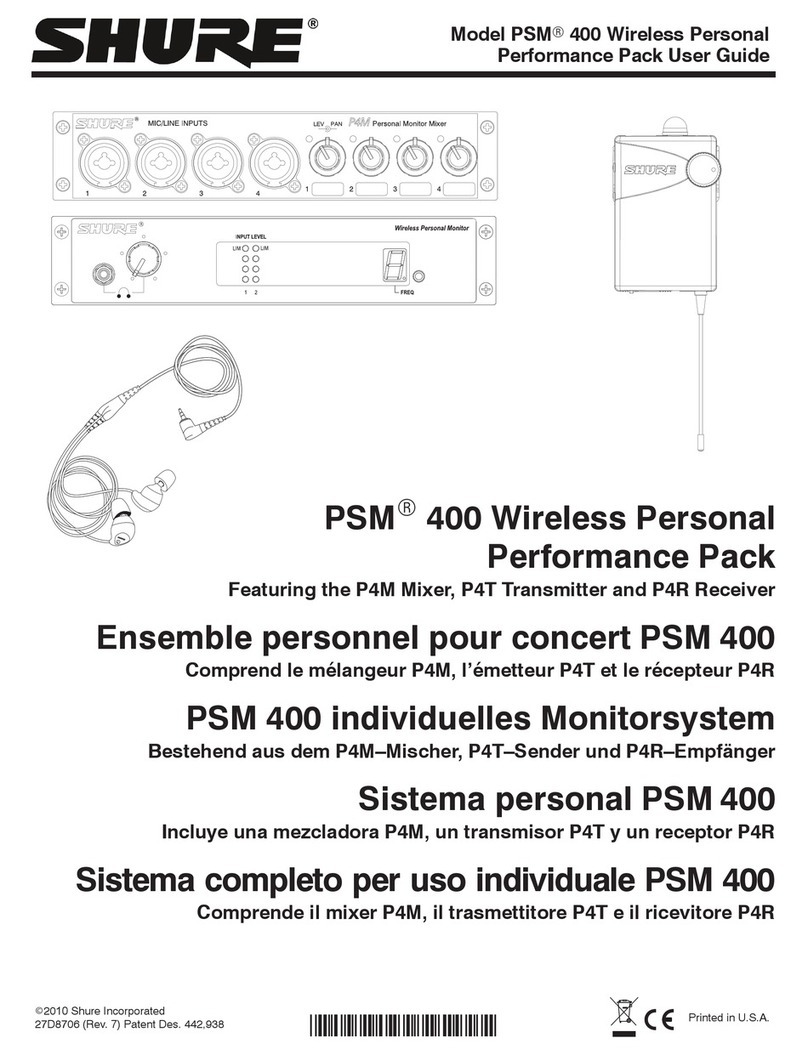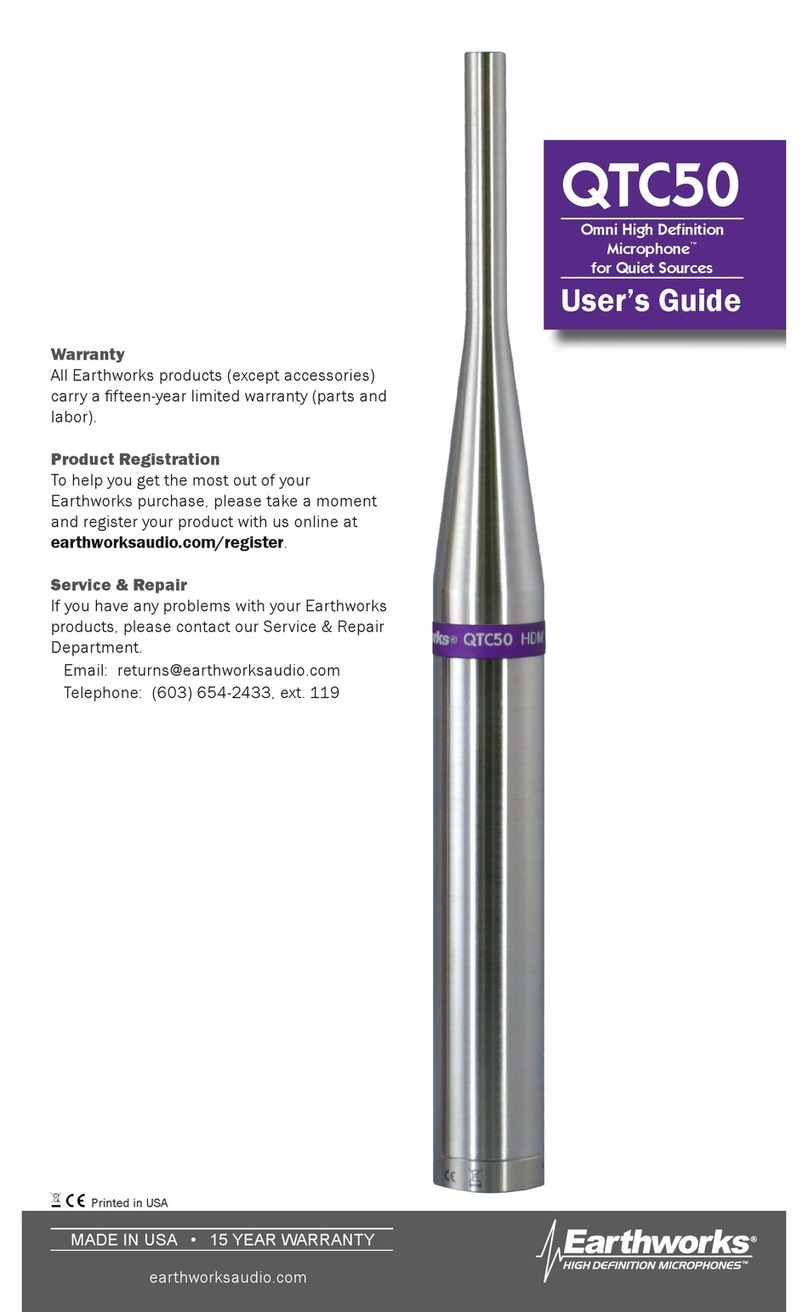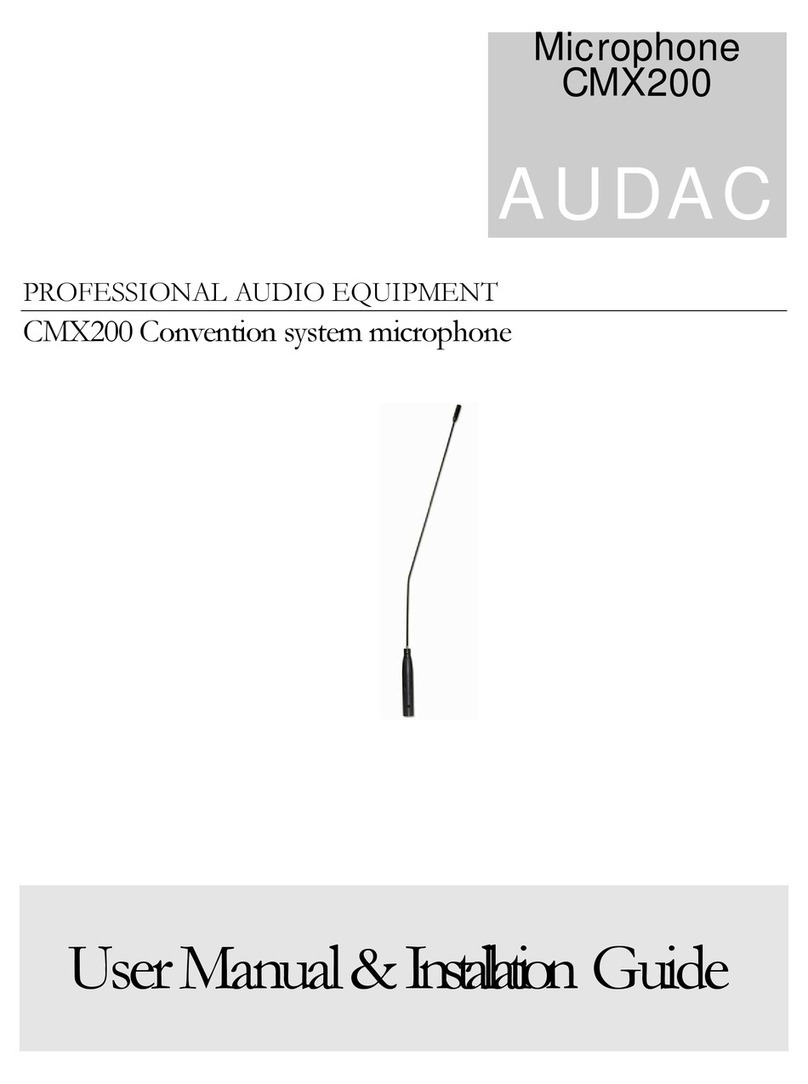tfpro M16 User manual

INSTRUCTION BOOK CONTENTS
Introduction 3
The microphone input 3
The line input 4
The LED level meter 4
The insert facility 5
The solo facility 5
The mute switch 5
The pan control 5
The channel fader 6
The mixer 6
The main outputs 6
The monitor outputs 6
The power supply 6
Technical Specifications 7
Operation 7
Problems 8
Regulations and safety 8
Power selection 9
Grounding 9
Warranty 9
Declaration of conformity 10
2
tfpro M16

M16
The M16 is 16 independent channels of microphone/line preamplifier.
In addition, it is a complete 16 into 2 mixer with individual gain controls and
pan controls.
THE MICROPHONE INPUT.
The microphone inputs are via XLR connectors.
The input is designed to suit conventional 200 ohm microphones, but
because of its novel circuitry, it is particularly good at dealing with signals
from dynamic microphones.
The 'current mode' microphone inputs operate by a current loop principle
where cable length problems are eliminated, and cable interference is
significantly reduced compared to conventional inputs.
A major factor with this system is that accidental unplugging of a
microphone causes the mic amp to go 'silent', so there is no crackle or
interference.
The input gain control is calibrated to give an idea of dB gain. When the
phantom power push-button is pressed, 48V phantom power is applied to
the XLR input.
When using capacitor microphones, plug the microphone into the M16
before switching on phantom power.
3
tfpro M16

THE LINE INPUT.
A front panel switch selects mic or line input.
On the rear of the unit there are TRS ¼ inch jack sockets for balanced line
input.
The line input stage, like the microphone amplifier, is transformer balanced
and isolated, and is capable of handling a very wide range of input levels.
The input is balanced and floating, but may be used for unbalanced inputs
with no change in performance.
THE LED LEVEL METER
The horizontal LED level meter shows the peak audio level at the direct
output of the channel.
The channel is designed to operate at high level and the top (red) LED
shows a level of +12dBu. Note, this is a peak level and so it is normal to
operate the channel so that this top LED lights occasionally; it represents a
level where there is still 10dB at least in hand.
BUT bear in mind that if several channels are peaking at this level, then the
mixer output could be very high.
PHASE REVERSE
Each channel has a phase reverse switch and indicator (yellow) LED. The
phase reverse switch operates on both microphone and line input, and
operates click free (the phase reverse is achieved electronically, not by hard
switching).
HIGH PASS FILTER
The low frequency response of the M16 is extremely wide, going down to
8Hz. In certain circumstances this may cause problems, so a 2nd order
filter (12dB per octave) at 75Hz is provided on each channel. A warning
LED shows when this filter is in circuit.
4
tfpro M16

5
INSERT FACILITY
When the channels are being used as a mixer, the individual channel output
can be used as a 'SEND' output for an insert.
A separate balanced 'RETURN' socket is on the rear panel of each channel,
labeled 'INSERT'. This arrangement gives the ideal facility of fully balanced
channel inserts.
The 'INSERT' socket sensitivity is approx. -8dBu for zero level at the main
mixer outputs, with the channel faders at 'zero'.
SOLO FACILITY
When the 'SOLO' button is pressed, it activates a relay changeover and
routes the selected channel direct to the mixer monitor output, at a level
that is similar to the normal line output. This output IS controlled by the
channel fader (it is post fader), and it mutes all other channels on the
monitor.
The monitored solo output is mono.
A highly visible red LED indicator shows that a solo button is pressed; this is
in addition to the individual channel indicator LED.
Activation of 'SOLO' does not affect individual channel output or mixer main
output in any way.
MUTE SWITCH.
On each channel there is a 'MUTE' switch which disconnects the channel
from the mixer. NOTE: This 'MUTE' control ONLY affects the channel
output to the mixer; it does NOT mute the individual channel output.
An LED shows that the channel is muted to the mixer.
PAN CONTROL
The rotary pan control apportions the audio signal between the left and right
mixer channels. When the pan control is in the centre, the audio signal is
4dB lower than at either extreme.
tfpro M16

6
CHANNEL FADER
The rotary channel fader affects only the audio level of the channel to the
mixer (it does NOT affect the individual channel output).
At about ¾ the way around, the control is marked 'zero'. This corresponds
to the normal operating point where zero level in the channel corresponds
to zero level at the mixer output.
THE MIXER
Audio signals from the channels are mixed on balanced mixing buses.
The mixer amplifier outputs are accessible on the rear panel as balanced
outputs.
Balanced input 'INSERT' jacks are provided so that balanced insert
equipment can be used.
MAIN OUTPUTS
The main mixer outputs are at zero level balanced, on XLR connectors.
A separate pair of connectors gives balanced output on ¼ inch TRS jacks.
The main output is not affected by 'solo'.
MONITOR OUTPUTS
The monitor outputs are on ¼ inch TRS jack sockets. The outputs are fully
balanced and at the same level (0dB) as the main outputs.
The monitor outputs are interrupted by the 'SOLO' facility.
POWER SUPPLY
The mains power supply can operate from either 120VAC or 230VAC. The
changeover switch is INSIDE the box.
CAUTION! Do not operate the power supply from the wrong input mains
voltage or the supply and possibly the M16 will be seriously damaged.
The supply provides stabilized power of +15volts, -15volts and +48volts.
The length of the power supply cable to the M16 is 1.8 metres and should
not be lengthened.
Do not operate the power supply disconnected from the M16.
tfpro M16

7
TECHNICAL SPECIFICATIONS
Number of simultaneous inputs 16
Number of simultaneous outputs 20
MICROPHONE INPUTS transformer balanced, designed FOR 200Ohm
source impedance.
Maximum system gain 70dB
LINE INPUTS 20Kohm transformer balanced floating. Maximum system
gain 50dB.
Direct channel outputs and mix amp outputs nominal 0dBu 300 ohms
balanced. Maximum output +21dBu
Channel insert returns and mix amp insert returns, nominal -8dBu. 20Kohm
balanced.
Monitor outputs and main outputs, nominal 0dBu 300 ohms balanced.
Maximum output +26dBu.
Amplitude frequency response; microphone, +0 -1dB 8Hz to 15KHz. HF
response reduces at approx 3dB per octave to 80KHz.
Line; +0 -1dB 8Hz to 22KHz; HF response reduces at approx 3dB per
octave to 100KHz.
Harmonic distortion; less than 0.001% 3rd harmonic, less than 0.003% 2nd
harmonic. At all gains and levels up to +18dBu output.
Noise. Equivalent to 127dB below input for mic gains above 50dB. (Current
mode microphone input, noise reduces with increased input impedance).
Power consumption 30 watts.
Size, 4U rack mounting plus power supply.
Weight, 5Kg.
OPERATIONS
To operate the M16…..
Place the M16 in a position where it is not close to other equipment that
radiates magnetic fields; this includes television monitors and mains
transformers.
The M16 input transformers are susceptible to magnetic interference and
care should be taken in this respect.
Place the power supply well away from the M16 unit making sure that there
is plenty of ventilation around it. The power supply runs warm.
tfpro M16

8
Connect the interconnecting cable to the M16 before turning the power on.
Make sure that input gain controls are turned down before turning on power.
Connect inputs and outputs and plug in mains cable NOTE: THERE IS NO
POWER ON/OFF SWITCH.
Switch on the M16 a minute or so before using it so that the amplifiers are
running optimally. Crackles when moving controls are possible immediately
after switch-on.
When using capacitor microphones, plug the microphone into the M16
before switching on phantom power.
A separate chassis ground connection is provided on the rear of the
chassis.
It is sometimes necessary to connect this to a suitable ground point.
PROBLEMS.
1) Got no signal. Mic/Line switch?
2) It's noisy (1).
The circuitry is extremely quiet, but the normal output level is high. Make
sure that the monitor equipment is suitable for true line level equipment!
3)It's noisy (2).
If the noise is a buzz, and it varies with input gain control, it could be
associated with other mains operated gear too close to the M16. Make
sure the M16 is well clear of transformers.
REGULATIONS AND SAFETY.
The M16 has been designed and built to conform to all known safety
requirements in the world.
Within the European Union the M16 easily meets the requirements for
electrostatic and electromagnetic emissions, and conforms to all safety
requirements of the European Common Market. the 'CE' symbol on the rear
of the unit indicates compliance.
In the United States of America the M16 complies with UL requirements
In that UL approved components are used in the power supply section.
tfpro M16

9
POWER SELECTION
The M16 is fitted with a mains voltage selector for change of input voltage.
To gain access to the changeover switch, disconnect from the mains and
remove the top of the power supply unit by undoing the 4 screws.
In the '110' position, the unit will operate between 95 and 125V AC.
In the '230' position, the unit will operate between 210 and 240V AC.
The fuse should remain at 500mA for both ranges.
POWER EARTH (GROUND) CONNECTION (and signal grounds)
The power supply is NOT connected to mains earth (the mains transformer
is double wound and complies with EEC standards of safety).
The Audio ground is not connected to chassis.
The 'screen' of all output terminations is bonded to the chassis.
The 'screen' of line input, individual line output and channel mix input
connect together, but are NOT connected to chassis. (They are left floating
to avoid possibility of ground loops.)
The screen of the microphone inputs is connected to audio ground in the
normal way.
It may be an advantage to connect the ground terminal on the rear of the
M16 chassis to a good mains ground point.
WARRANTY.
In the unlikely case of a breakdown, please return the unit in its original
packing through the supplier.
The unit will be attended to immediately and returned to your supplier.
If any breakdown occurs (excluding physical mistreatment) within 12
months of purchase no charge will be made.
tfpro M16

10
DECLARATION OF CONFORMITY.
This analogue audio processing equipment conforms to the standards and
requirements of the European Economic Community.
The EC Harmonised standards that have been applied are;
a) Electrical equipment (safety) Regulations 1994 (S.I. 1994/3260)
b) Electromagnetic Compatibility Directive (89/336/EEC) incorporating (S.I.
1992/2372)
04
Distribution by TFPRO, Torquay, UK.
phone +44 1803 316599
fax +44 1803 328333
email sales@tfpro.com
DESIGNED BY TED FLETCHER AND MANUFACTURED IN ENGLAND.
tfpro M16
Table of contents

